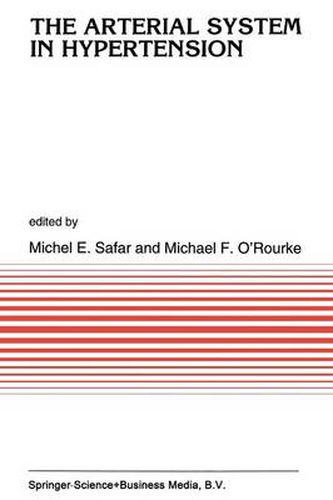Readings Newsletter
Become a Readings Member to make your shopping experience even easier.
Sign in or sign up for free!
You’re not far away from qualifying for FREE standard shipping within Australia
You’ve qualified for FREE standard shipping within Australia
The cart is loading…






This title is printed to order. This book may have been self-published. If so, we cannot guarantee the quality of the content. In the main most books will have gone through the editing process however some may not. We therefore suggest that you be aware of this before ordering this book. If in doubt check either the author or publisher’s details as we are unable to accept any returns unless they are faulty. Please contact us if you have any questions.
MICHEL E. SAFAR and MICHAEL F. O'ROURKE One of the principal problems of hypertension is the precise definition of blood pressure as a cardiovascular risk factor. Clinicians indicate peak systolic pressure and end diastolic pressure in the brachial artery as the principal criteria for blood pressure measurement. Consequently, these values are as indicators for clinical management and therapeutic adjustment. This used methodology, based on indirect blood pressure measurements at the site of the brachial artery relates only to the highest and lowest pressure in that vessel, and does not give any information of the blood pressure curve itself; this carries more information than peak systolic pressure and end diastolic pressure. As a first step in better analysis of the blood pressure curve, research workers in experimental hypertension defined in addition to peak systolic pressure and end diastolic, another blood pressure value, mean arterial pressure, i. e. the average pressure throughout the cardiac cycle, and about which pressure fluctuates. This is the pressure recorded by Hales [1] and by Poiseuille [2] in their pioneering studies. By application of Poiseuille’s Law, this definition of mean arterial pressure led to the concept that increased mean arterial pressure (and therefore hypertension) was related, at any given value of cardiac output, to an increase in vascular resistance, i. e. to a reduc tion in the caliber of the small arteries.
$9.00 standard shipping within Australia
FREE standard shipping within Australia for orders over $100.00
Express & International shipping calculated at checkout
Stock availability can be subject to change without notice. We recommend calling the shop or contacting our online team to check availability of low stock items. Please see our Shopping Online page for more details.
This title is printed to order. This book may have been self-published. If so, we cannot guarantee the quality of the content. In the main most books will have gone through the editing process however some may not. We therefore suggest that you be aware of this before ordering this book. If in doubt check either the author or publisher’s details as we are unable to accept any returns unless they are faulty. Please contact us if you have any questions.
MICHEL E. SAFAR and MICHAEL F. O'ROURKE One of the principal problems of hypertension is the precise definition of blood pressure as a cardiovascular risk factor. Clinicians indicate peak systolic pressure and end diastolic pressure in the brachial artery as the principal criteria for blood pressure measurement. Consequently, these values are as indicators for clinical management and therapeutic adjustment. This used methodology, based on indirect blood pressure measurements at the site of the brachial artery relates only to the highest and lowest pressure in that vessel, and does not give any information of the blood pressure curve itself; this carries more information than peak systolic pressure and end diastolic pressure. As a first step in better analysis of the blood pressure curve, research workers in experimental hypertension defined in addition to peak systolic pressure and end diastolic, another blood pressure value, mean arterial pressure, i. e. the average pressure throughout the cardiac cycle, and about which pressure fluctuates. This is the pressure recorded by Hales [1] and by Poiseuille [2] in their pioneering studies. By application of Poiseuille’s Law, this definition of mean arterial pressure led to the concept that increased mean arterial pressure (and therefore hypertension) was related, at any given value of cardiac output, to an increase in vascular resistance, i. e. to a reduc tion in the caliber of the small arteries.